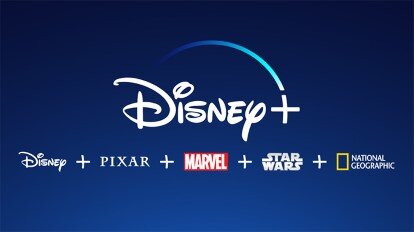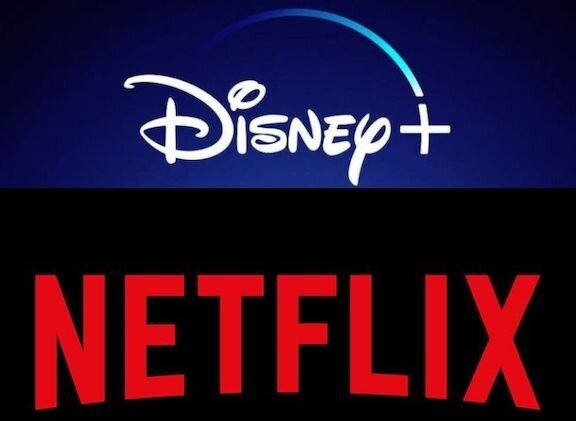Disney+ and its Infiltration of the Streaming Monopoly
Source: Disney UK
Broadway musical Hamilton was released on Disney+ at the start of July, which put the streaming service into the limelight, as Disney+ took an initial step away from solely original Disney content. Disney’s overarching aim was to infiltrate the streaming monopoly made up of Netflix and Amazon Prime. Come COVID-19, the pandemic has confined people to their homes and given the streaming industry an unexpected boost. With many people off work and lacking other entertainment options, turning towards a library of movies and TV series has become a natural choice.
While movie theatres and live shows have completely shut down operations, the pandemic has been a major tailwind for Netflix and Amazon Prime. In contrast, Disney has been hit relatively hard by the pandemic. Theme Parks have been shut for months, movies have been postponed, and ESPN, a Disney-owned network, has had no live sports to televise until recently. As a result, since the beginning of February, Disney has lost $70Bn in market capitalisation. With other revenue streams cut off, Disney has been forced to double down on Disney+. Already at 50m paid subscribers, the service is 2 years ahead of initial predictions, after COVID-19 developed a captive audience of people quarantining at home and finding themselves with more free time. Compare this to Hulu (also Disney owned), which has 30m subscribers after 13 years of operation - significantly less growth per unit of time. The difference between Hulu and Disney+’s growth highlights the importance of using ‘Disney’ in its name, as it directly associates new products with the Disney brand and almost positively reinforces the platform. On the flip side, many consumers are unaware of Disney’s connection to Hulu. It is also important to consider the increased complexity of Hulu deals, which give you the option to remove ads at some price points, and even the opportunity to add live TV channels, such as HBO, for up to $44.99 a month. In contrast, there is an element of simplicity to Disney+, which would attract more viewers due to there being clarity in what they would receive with the subscription.
Source: What to Expect
While it may look as if Disney is catching up in the streaming market, it has a competitive advantage over other companies through its large library of original content, developed over the years via movies and TV shows. In contrast, while Netflix has been making original content since 2013, there is still a focus on licensed content such as Friends and The Office. With much of the Disney+ library being original content, it gives an opportunity for such content to be “cross-monetized.” This is most pertinent with the Star Wars and Marvel franchises, as major releases are shown in theatres and their spin-offs are placed on Disney+. Estimates give Disney a 40% control of the theatrical box office, which has put them in a strong position to infiltrate the streaming monopoly. This lowers the risk of developing a streaming network, as many of Disney’s major film releases are already proven successes. Placing these on the network provides a solid framework in which spin-offs are used to expand the content library.
Prior to these developments, Disney made $300m by licensing its original shows out to other services. By putting faith in Disney+, their profit forecasts would be relatively strong. Moreover, their position has been strengthened after bringing in licensed content from other companies, which allows for further profit. The release of the musical Hamilton in early July catapulted Disney+ app downloads by 72.4%, compared to the previous 4 weeks in the US. Hamilton’s success shows how using licensed content to supplement the original can provide spikes in interest. However, the current costs of $6.99 a month or $69.99 a year are reduced compared to that of Netflix, as the content library is currently much smaller. This lowered cost helps increase revenue, as it can attract a wider market and therefore, a larger initial subscriber base as well.
Source: Android Authority
As quoted by Robert Iger in February, Disney+ had “exceeded even our greatest expectations”. After the announcement of 50m subscribers in April, Disney’s stock increased by around 7% in after-hours trading. Because this jump in stock value occurred even after major stock exchanges had closed for the day, Disney+ is undeniably successful from a business standpoint. Six weeks after its US launch, Disney was pricing their streaming business at $108Bn, which is 69% of Netflix’s enterprise value. Highlighting how total value is competitive, even in the service’s infancy, shows how rapidly it has grown. If we compare the number of subscribers, Netflix currently dwarfs that of Disney+: 167m to just over 50m, respectively. However, Netflix was introduced in 2007, and their international expansion accounted for more than 60% of their subscribers. In comparison, although Disney first launched in North America in November 2019, when they later launched in Europe and India in March 2020, they saw an increase of 8m subscribers in a week. This expansion is still in its infancy. By the time Disney+ is available worldwide by the end of 2021, the subscription gap between them and Netflix will have shrunk.
However, we need to understand how the streaming industry, in general, will react to a gradual return to normality in the coming year. There are many post-COVID variables, and with a worldwide recession, it is likely that consumer behaviour will change. Many people have shown willingness to pay for multiple streaming services which helps support Netflix and Disney+. Netflix has a much larger, licensed content library whereas Disney+ has an array of original, acclaimed content. The number of streaming subscriptions is still likely to rise globally, meaning neither service would see a decline in subscriptions. Yet, whilst Disney’s international expansion of Disney+ will shrink the gap between it and Netflix, Disney+’s current growth rate is unlikely to continue when global. Despite this, Disney’s current situation is still a success, since Disney+ has been able to infiltrate the Netflix and Amazon Prime streaming monopoly.



